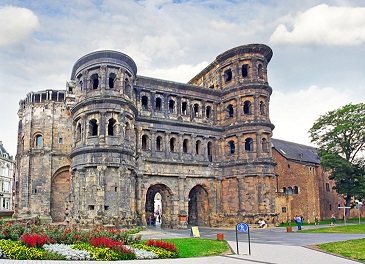Trier is one of the oldest towns of German that has its roots dating back to some 16000 years. The beautiful town is located in the beautiful valley of Mosel which is still preserving many Roman Empire sites and that are also listed in the UNESCO World Heritage Site.
The largest Roman gate outside Italy, Sensational bathing complex, a palace Hall built by Emperor Constantine, Trier Dom and Church of our Lady are some of the rare monuments of Roman that has been granted protection in the UNESCO World Heritage Status from the year 1986.
Apart from these the main reason to visit the stunning city are its medieval town center, the birthplace of Karl Marx, tasty food and award-winning wines. The topmost things to see and do in the town of Trier are
Porta Nigra
Begin your tour of Trier’s wonders with this largest black gate of Roman city, Porta Nigra. The gate was built in around 2nd century and is still one of the best protected that is in the north of the Alps. It is made up of 7200 huge blocks of sandstone that were stuck to its place with many iron clamps.
The gate has two towers in the semicircular shape a larger climbing stairway that leads you to the four storeys structure. One can still observe some of the iron fasteners used to bind the blocks on the eastern staircase.
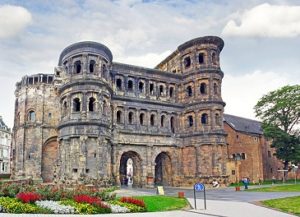
It survived through many reconstruction and repurposing of centuries. It also provided the residence in the 11th century to Saint Simeon of the Trier. Later on, it was served as a church after his death in his memory. Napolean commanded to restore the structure in its original form in 1803.
Aula Palatina
It is also known as the Basilica of Constantine. It was ordered by Emperor Constantine I having his reign on the Roman Empire to be served as the throne room in the 3rd century. Later it was served as the protestant church on order of Fredrick William IV.
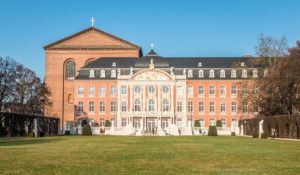
The room is very large that measures up to 219 feet in length and 108 feet high. As many as 1300 people can be accumulated in this traditionally built church even today. It still astonishes its visitors. It is still the oldest building in Trier that is served as a church in Germany.
Cathedral of Trier
The Cathedral of Trier or say Trier Dom is basically the huge and high cathedral of Saint Peter whose foundation was started in the 4th century making it the oldest church of Germany. What we see today is mostly built in the 11th and the 12th century and its restoration was completed in 1974.
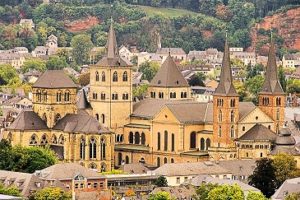
The architecture is basically a mixture of Romanesque, Gothic and Baroque styles. The interior of the church has noted ecclesiastical relics. There is a collection of art which is from the antiquity to the 20th century, and also liturgical and medieval manuscripts elements in its treasury.
The major attraction includes splendid monuments like “Holy Tunic”, a robe worn by Jesus and Emperor’s mother skull. A tour also runs which allows you to take a detailed visit inside that also includes the glimpse of the bowels of the cathedral.
Trier Imperial Baths
There lie the ruins of the Roman Imperial Baths also known as Kaiserthermen in the South of Electoral Palace in Trier. One of the grandest structure in whole Europe that were from the 4th century are these baths which were then built in a castle during the medieval times.
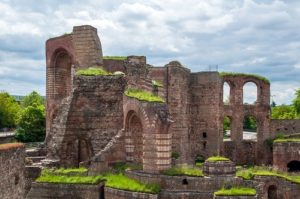
The major attraction of these baths are to explore their underground rooms and passages, wide hot water baths in which water was heated by six huge boilers at that time which were capable of holding around 600 persons to bath at a time. There are still remains of the four boilers rooms from the six.
Amphitheatre
The amphitheater if Trier is located on the Petrisberg hill and was used for blood sports in the antiquity. The monument was built in the late half of the 3rd century and many sporting activities like animal fights, battles of gladiators and executions of prisoners were held here.
There was a reason to build it on the hill as the seating space can use the natural slope and hence reduce the earthwork by man labor. Other than sports these place was also used for religious gatherings and celebrations.
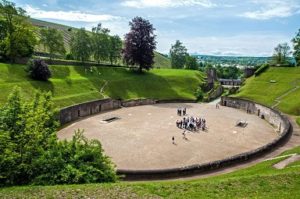
Visitors find it amusing to see the arena, cages, and rooms where animals and man use to wait before the fights, as well as theatre ranks.
Hauptmarket
The market rights were gained by Trier in 958 after which it has become the center of many notable sights around that also includes Jewish quarter and cathedral. The market is at a short walking distance from Porta Nigra.
There are many great restaurants and cafes where you can treat yourself with local and tasty food. You will be amused to see many stunning half-timbered buildings of the medieval age that includes the banquet house of the city dating back to the 15th century.
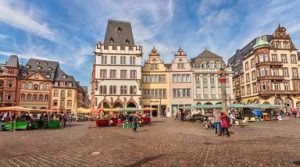
Other highlights of the place are magnificent Market Fountain of 1595 built in memorial of St.Peter, Church of St. Gangolf’s in the Gothic style as well as many mocking monsters.
Simeonstift, The City Museum
The Abbey of St Simeon which is just next to Porta Nigra that is built in the 11th century and has well-preserved convent. Now it has been converted to a museum depicting the history of Trier from the medieval age to today’s modern time.
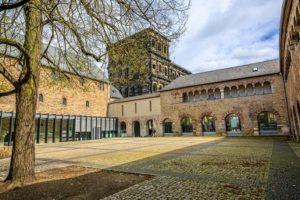
The museum has a collection of over 900 exhibits that has various paintings from the resurgence to the 20th century, varieties of statues , vivid art displaying porcelain ,day to day objects revealing everyday’s life of Trier from past, sculptures, handicrafts, furniture dating back to 2nd century, and different types of oil lamps.
Karl Marx House
Trier is house to popular economist and philosopher Karl Mark who was born there in 1818. His house in Bruckengasse 10 is now a museum that outlines the communism history and his life journey from beginning to his life and growth in Germany till his death in London exile. It also portrays his theories and concept in the rise of communism and its influence in the Soviet Union, Asia, and Eastern Europe.
There are original letters that were written by Karl Marx present in the museum. His so popular old armchair on which he did his reading is also well preserved. Tour guide and Audio guides for the museum are available on request.
Barbara Baths
Barbara baths were the second largest bath in the Roman Empire that measured 452000 square feet. Its construction was completed in the 2nd century. The eye-catching features are the highest quality wellness and spa facilities during that time. There were also certain beauty salons, heated pools, cultural center,library, and restaurants which were too appreciable.
For visitors, a boardwalk is constructed over the remains that have information panel describing the needed for travelers to know about its history. However, the bathing complex was closed for 5 years in 2000 for its preservation.
After it has reopened, metal stairways and footbridges are constructed which will lift you above the excavated pools and archways.
Electoral Palace
One of the best representation of Rococo art in Germany is the Electoral palace located near to the Aula Palatina. There is a gorgeous palace garden of the Baroque style and a huge basilica inside the palace which adds more to its beauty. The garden has many sculptures of the 18th century made by Ferdinand Dietz.
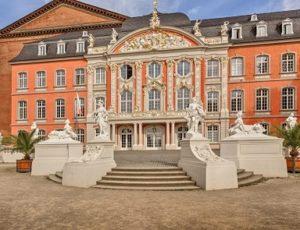
Other attractions are numerous fountains and ponds, flower beds stretch on a larger area and a miniature garden accessible to visitors.

